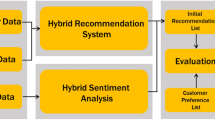Abstract
Recent decades have seen huge amounts of information collected in clinical databases for mining patients’ health states from multimedia data. Since on the web diverse type of web recommendation is made obtainable toward user every day with the purpose of consists of Image, Video, Audio, query suggestion and web page. Therefore, multimedia data accessible designed for patient-oriented decision making has improved significantly however is often scattered across various sites. In this perspective, Web page recommender systems with multimedia data might provide patients with further laymen-friendly information helping toward enhanced understand their health status as represented by their record. In this research work, Web Page health recommender systems are introduced via the use of certain agents in order to provide extremely appropriate web pages for patients. The main feature of Particle Agent Swarm Optimization (PASO) is that the creation of the algorithm is denoted by a set of Particle agents who cooperate in attaining the objective of the task under consideration. In the research method, two kinds of agents are presented: web user particle agent and semantic particle agent. PASO Based Web Page Recommendation (PASO-WPR) system is an intermediate program (or a particle agent) containing a user interface, which wisely produces a collection of info that suits an individual’s requirements. PASO-WPR is carried out dependent upon incorporating semantic info with data mining techniques on the web usage data as well as clustering of pages dependent upon similarity in their semantics. As the Web pages with multimedia files are viewed as ontology individuals, the pattern of patients’ navigation are like instances of ontology rather than the uniform resource locators, and with the help of semantic similarity, page clustering is carried out. For producing web page recommendations to users, the outcome is utilized. The recommender engine concentrates on the semantic info and as well exploits a particle agent to reform the outcomes of web pages recommendation. Consequently, the system response time is enhanced and as a result, creating the framework scalable. The outcomes recommend that the PASO-WPR system is improved in identifying the web page that a user is about to request while matched up other approaches. The outcome proves that the presented PASO-WPR system is carried out well in regard to the accuracy measures aspects such as accuracy, coverage and M-Metric are identified to contain greater values compared to the previous item based collaborative filtering recommendation systems.













Similar content being viewed by others
References
Abrishami S, Naghibzadeh M, Jalali M (2012) Web page recommendation based on semantic web usage mining. In: International conference on social informatics. Springer, Berlin, pp 393–405
Bari P, Chawan PM (2013) Web usage mining. Journal of Engineering, Computers & Applied Sciences (JEAS) 2(6):34–38
Batmaz Z, Yurekli A, Bilge A et al (2018) Artif Intell Rev. https://doi.org/10.1007/s10462-018-9654-y
Berendt B, Hotho A, Mladenic D, Van Someren M, Spiliopoulou M, Stumme G (2004) A roadmap for web mining: from web to semantic web. In: Web mining: from web to semantic web. Springer, Berlin, pp 1–22
Clerc M (2010) Particle swarm optimization (Vol. 93). Wiley, Hoboken
Cooley R, Mobasher B, Srivastava J (1999) Data preparation for mining world wide web browsing patterns. Knowl Inf Syst 1(1):5–32
Du KL, Swamy MNS (2016) Particle swarm optimization. In: Search and optimization by metaheuristics. Birkhäuser, Cham, pp 153–173
Etminani K, Delui AR, Naghibzadeh M (2010) Overlapped ontology partitioning based on semantic similarity measures. In: 2010 5th international symposium on telecommunications (IST), pp 1013–1018
Frikha M, Mhiri M, Gargouri F (2015) A semantic social recommender system using ontologies based approach for Tunisian tourism. Advances in Distributed Computing and Artificial Intelligence Journal (ADCAIJ) 4(1):90–106
Göksedef M, Gündüz-Öğüdücü Ş (2010) Combination of web page recommender systems. Expert Syst Appl 37(4):2911–2922
Göksedef M, Öğüdücü ŞG (2007) A consensus recommender for web users. In: International Conference on Advanced Data Mining and Applications. Springer, Berlin, pp 287–299
Grimm S, Abecker A, Völker J, Studer R (2011) Ontologies and the semantic web. In: Domingue J, Fensel D, Hendler JA (eds) Handbook of semantic web technologies. Springer, Berlin
Gulzar Z, Leema AA, Deepak G (2018) PCRS: personalized course recommender system based on hybrid approach. Procedia Comput Sci 125:518–524
Havens TC, Bezdek JC, Leckie C, Hall LO, Palaniswami M (2012) Fuzzy c-means algorithms for very large data. IEEE Trans Fuzzy Syst 20(6):1130–1146
Jin X, Mobasher B, Zhou Y (2005) A web recommendation system based on maximum entropy. ITCC ‘05: Proceedings of the international conference on information technology: Coding and computing (ITCC’05), Washington, DC, USA (Vol. I, pp. 213–218). IEEE Computer Society
Johnson F, Gupta SK (2012) Web content mining techniques: a survey. Int J Comput Appl 47(11):44–50
Kennedy J (2011) Particle swarm optimization. In: Encyclopedia of machine learning. Springer, Boston, pp 760–766
Kumar V, Rao VN (2012) ‘Of depth-first search’. Parallel Algorithms for Machine Intelligence and Vision, Springer Science & Business Media, p 1–433
Li J, Zaiane OR (2004) Combining usage, content, and structure data to improve web site recommendation. In: Proceedings of 5th international conference on electronic commerce and web, p 305–315
Liu B (2007) Web usage mining. Web Data Mining: Exploring Hyperlinks, Contents, and Usage Data, Springer Science & Business Media, p 449–483
Mohr G, Stack M, Rnitovic I, Avery D, Kimpton M (2004) Introduction to heritrix. In: 4th International WebArchiving Workshop, p 109–115
Nguyen TTS, Lu HY, Lu J (2014) Web-page recommendation based on web usage and domain knowledge. IEEE Trans Knowl Data Eng 26(10):2574–2587
Poli R, Kennedy J, Blackwell T (2007) Particle swarm optimization. Swarm Intell 1(1):33–57
Rani M, Nayak R, Vyas OP (2015) An ontology-based adaptive personalized e-learning system, assisted by software agents on cloud storage. Knowl-Based Syst 90:33–48
Rettinger A, Lösch U, Tresp V, d’Amato C, Fanizzi N (2012) Mining the semantic web. Data Min Knowl Disc 24(3):613–662
Román PE, L’Huillier G, Velásquez JD (2010) Web usage mining. In: Advanced techniques in web intelligence-I. Springer, Berlin, pp 143–165
Samizadeh R, Ghelichkhani B (2010) Use of semantic similarity and web usage mining to alleviate the drawbacks of user-based collaborative filtering recommender systems use. International Journal of Industrial Engineering and Production Research (IJIE) 21(3):137–146
Schlicht A, Stuckenschmidt H (2007) Criteria-based partitioning of large ontologies. In: Proceedings of the 4th international conference on Knowledge Capture. ACM, p 171–172
Senkul P, Salin S (2012) Improving pattern quality in web usage mining by using semantic information. Knowl Inf Syst 30(3):527–541
Stumme G, Hotho A, Berendt B (2006) Semantic web mining: state of the art and future directions. Web Semant Sci Serv Agents World Wide Web 4(2):124–143
Thangaraj M, Mchamundeeswari (2014) Agent based personalized semantic web information retrieval system. Int J Adv Comput Sci Appl 5(8):103–110
Wanaskar U, Vij S, Mukhopadhyay D (2013) A hybrid web recommendation system based on the improved association rule mining algorithm. p 1–9. arXiv preprint arXiv:1311.7204
Xu G, Zhang Y, Li L (2011) Web content mining. In: Web mining and social networking. Springer, Boston, pp 71–87
Zhang S, Wang RS, Zhang XS (2007) Identification of overlapping community structure in complex networks using fuzzy c-means clustering. PHYSICA A: Statistical Mechanics and its Applications 374(1):483–490
Zhang L, Tang Y, Hua C, Guan X (2015) A new particle swarm optimization algorithm with adaptive inertia weight based on Bayesian techniques. Appl Soft Comput 28:138–149
Author information
Authors and Affiliations
Corresponding author
Additional information
Publisher’s Note
Springer Nature remains neutral with regard to jurisdictional claims in published maps and institutional affiliations.
Rights and permissions
About this article
Cite this article
Manikandan, R., Saravanan, V. A novel approach on Particle Agent Swarm Optimization (PASO) in semantic mining for web page recommender system of multimedia data: a health care perspective. Multimed Tools Appl 79, 3807–3829 (2020). https://doi.org/10.1007/s11042-018-7141-8
Received:
Revised:
Accepted:
Published:
Issue Date:
DOI: https://doi.org/10.1007/s11042-018-7141-8




